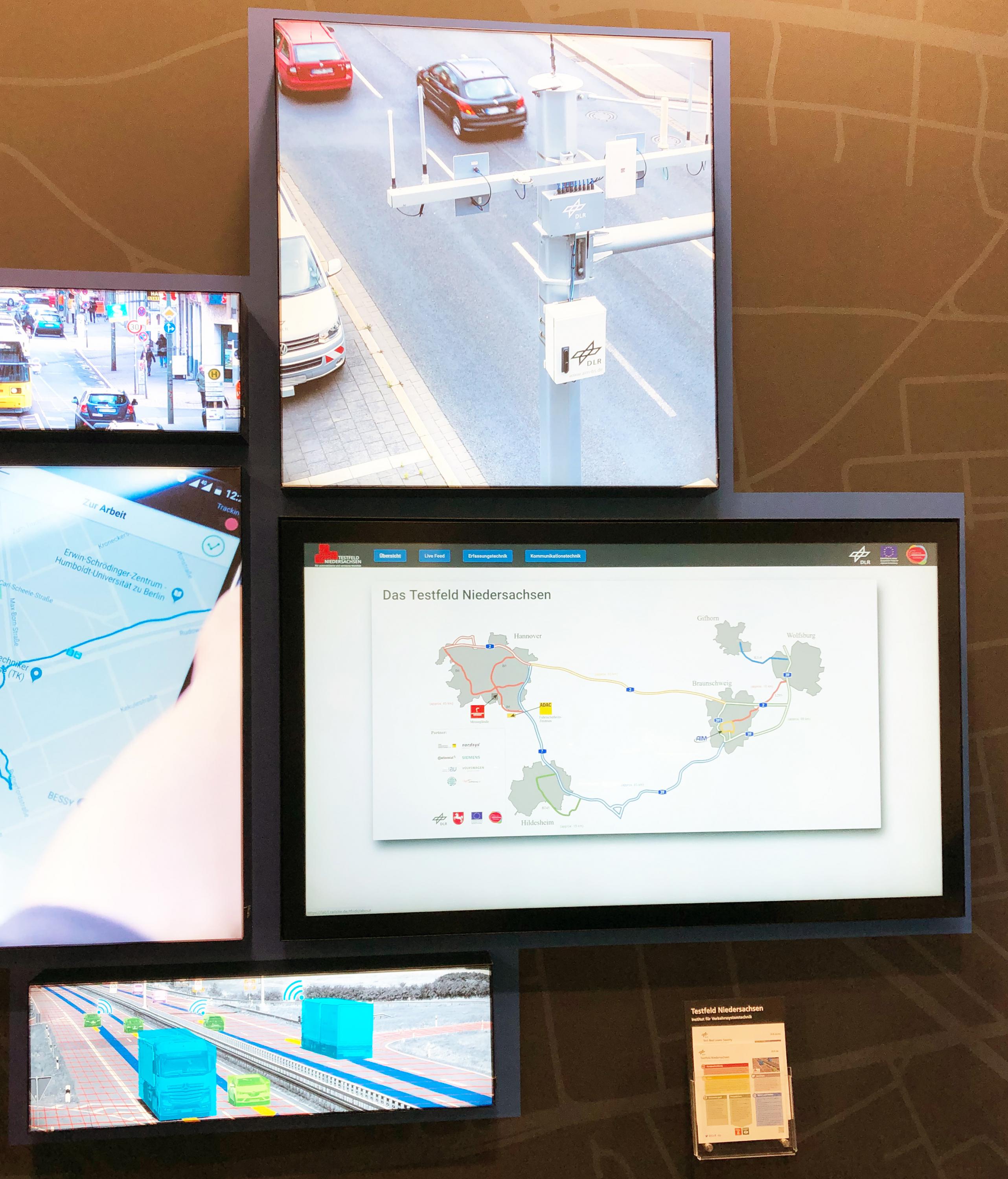
Test Bed Lower SaxonyThe exhibit shows an interactive map of the Test Bed Lower Saxony. Touching the icons along the route opens images and technical details for the test bed section or service.
Automated and connected vehicles can help ease congestion on the roads, reduce accidents and increase passenger comfort. They will also improve energy efficiency in the transport sector and reduce negative environmental impacts. High-performance, flexible test infrastructure is a crucial tool for the efficient development of automated and connected vehicles. The Test Bed Lower Saxony provides a unique and comprehensive combination of testing and experimentation facilities – from simulations to actual routes in the public realm. Consisting mainly of motorways, the Test Bed Lower Saxony will extend along a route approximately 280 kilometres long once its construction is complete. It incorporates the established services and routes within the Application Platform for Intelligent Mobility (AIM), which has been fully operational in the city centre of Braunschweig since 2014. The test bed will enable trials to be conducted in a variety of different traffic environments and situations in Lower Saxony. The test bed can be used to analyse driving behaviour and traffic flow from an overhead view. Networking experiments can also be conducted, and scenarios for the deployment of automated and connected vehicles can be simulated. In addition, the Test Bed Lower Saxony enables the effectiveness of new traffic services or digital infrastructure components to be tested in a practical setting.
